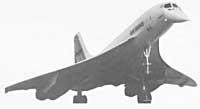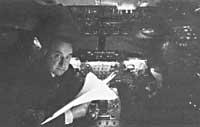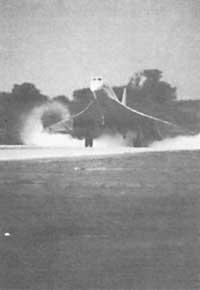Concorde, ten years of a dream of greatness

Concorde was born in 1962 when the governments of France and Britain agreed and launched the project of a commercial plane that would fly faster and higher. The project was big and it put the technology before a challenge. The challenge was not only technological but also economic.
At first they thought that the cost of the project was going to be around 90 million and at the end was (1500 billion). In addition, Concorde has not managed to estimate the airline companies. Only two people use Concber in the world: Air France and British Airways. This is not a good brand!
One of the signatories of the agreement, the then British Air Minister, is proud of Concorde "The Concerto has been a great technological achievement. We have not reached the moon, but we have the Concerto and a flight supplanted."
Others are not as optimistic as Geoffrey Night, who worked on the Concorde project. "If we had to start the project now, we would do it differently. We had 4 main contractors. That is, for two fuselayas, for the construction of two engines, two governments and without bosses. Having two assembly lines, from a commercial point of view, made no sense and probably doubled the cost of development."
Another significant fact is the problem of suicide flight. Why didn't Americans, being at the top of technology, start working on such jobs?

Sir Archibald Russell, British designer of Concorde, has solved the problem as follows: We invented it. We said the fastest possible speed was the Mach 2 (Mach 1 = sound speed). The Americans wanted the Mach 3.5 and thought they could make fuselage only with titanium. The Mach 2 is the maximum speed that can be obtained by aluminum alloy. The Americans were too ambitious."
In 1969 the prototypes of Concorde, both French and British, made their first flights. In 1970 both reached speed Mach 2. The technical problems were not yet resolved. Read the words of Brian Trubshaw, head of the former British Airways Jets pilots: "As we got off Mach 2 we had an impressive explosion. We, of course, were not used to it, so we thought World War III was born. The problem was that what was known in military aircraft was not acceptable for passenger transportation. Our biggest problem was this."
But Concorde's most difficult problems were financial. The British government increasingly studied the suspension of the project as costs increased. Tony Benn, former minister of the then Labour governments, explains the core of the problems. "The truth is that Concorea was initiated by Macmillan, so that we, Great Britain, enter the Common Market. Macmillan, however, did not trust the French. Therefore, indicating that the French wanted to include in the contract a "rupture clause", it was negative. Therefore, when in 1964 the Labour government began to work, and when analyzing the possibilities of termination of the contract, we realized that there were no breaking clauses."
Despite the way to face Brittany, the Concorde continued to overcome all the obstacles on the way. On 21 January 1976 he made his first commercial flight from London to Bahrain. Captain Norman Todd says with that flight: "I remember that there was a lot of pressure in us. Some travelers had never flown on a superpersonal plane and wanted to see what should happen. It was difficult to use our forces at work. But we use them."

The obstacles for Concorde did not end like this. The Americans banned him from landing and the environmentalists did not agree with the plane, it was too strong. There were also those who put moral obstacles on him, as the Bishop of Birmingham, Hugh Mocitefio, said: "It is the tragic symbol of the technological era, of a technology that can have a better use than the transport aloud of healthy and very expensive people."
The American attitude soon changed and by mid-1976 obtained the landing authorization.
There we have today, the only superpersonal aircraft for travelers in the world, which only the two airlines use. Asking if the effort to put the Councilor on the air has been useless, is not a simple question!





